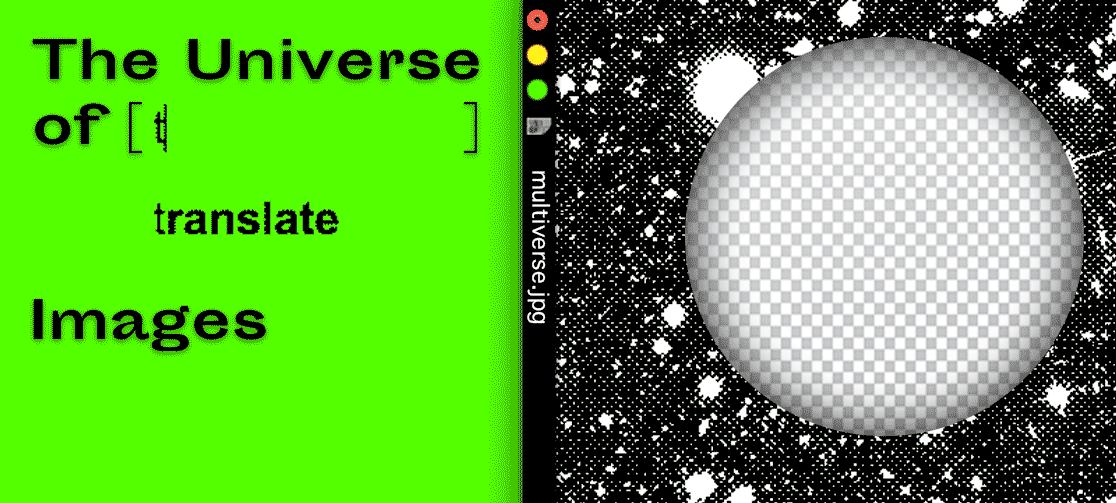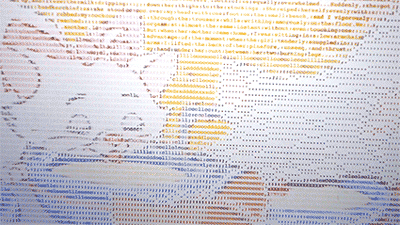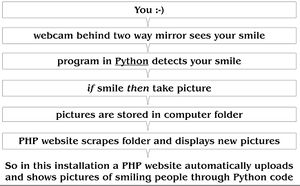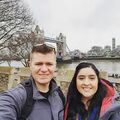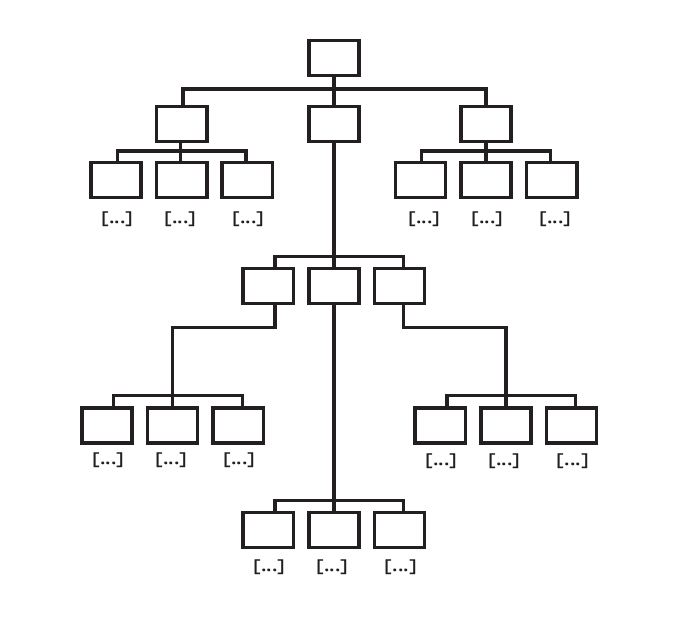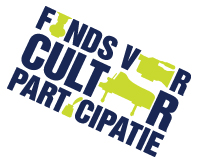The Universe of ( ) Images Part 2
| The Universe of ( ) Images Part 2 | |
|---|---|
| Name | The Universe of ( ) Images Part 2 |
| Location | Froh! Cologne |
| Date | 2018/12/07-2018/12/09 |
| Time | 10:00-17:00 |
| PeopleOrganisations | Hackers & Designers, Froh! |
| Type | Meetup |
| Web | Yes |
| No | |
Cologne!
The long-held idea of images as proof of reality vanished. Washed away by manipulative practices of image production our hyper-visual media streams have become highly subjective and emotional. Authenticity claims to be the new challenge while power structures shift and users become creators.
Within two 48 hour workshops we will explore the shift of construction and perception of 'truth' in visual culture. Images and videos that long served as pieces of evidence, can now be modified by technical means and thus be manipulated in visible as well as invisible manner. At the same time our use and understanding of the notion of truth and reality has heavily changed. 'White lies' and 'alternative facts' are buzzwords that illustrate how truth is about to turn into a subjective concept. Meanings and images are being tweaked to gain power, sympathy or trust.
Together we look at the role of technical applications within the de-/construction of truth. How can the tools we build and use shape how we publish and consume media? Who can we trust when the concept of truth has vanished? Can ideas of 'subjectivity' replace the notions of objectivity and rationality? …
We invite young journalists, hackers, photographers, designers, filmmakers, programmers and visual makers to two weekends of experimenting, exploring, questioning, hacking, designing and publishing. The course will be led by the Dutch initiative Hackers & Designers from Amsterdam and the German non-profit organisation Froh! from Cologne. Together they build a team of journalists, designers, artists and hackers. They’ll be joined by experts with input and guidance. The project will run on two weekends and in two cities.
An article about the workshop by Jeannette Weber
Longer workshop description can be read here
Documentation of works
Lacey Verhalen
Process:
- Image to ASCII. Follow directions here: https://github.com/pjobson/movie2ascii Tool: Terminal
- ASCII Browser Preview to video file. Make a screenrecording. Tool: Quicktime, Kap, etc.
- Download input file. Tool: Clipgrab. https://clipgrab.org/
- Video Layering. Layer the ASCII and input video. Tool: After Effects
- Download text to embed in the image. Tool: Convert image to text. https://www.onlineocr.net/
- Complex-ify. Add text to the image manually. Tool: After Effects, Photoshop
Upendra
»Edible Images« is a series of zines, produced as a result of an ongoing experiment in generative publishing; and marks the starting point of such an experiment.
The idea of edible images is rooted in the critique of the aesthetic economy that food operates within today. For, our food ecologies today have come a long way from the original organic landscapes and now stand as a universe of edible images, one that is housed within the convenient space of our neighborhood supermarket. With this process, our visual grammar in relation to food has also changed drastically; from being a tactical understanding of food as it naturally grows in organic landscapes, to a comprehension of food based on the two-dimensional images that claim to represent it.
Neo-Liberalization of food, as with everything else, has led to the expropriation and subsequent extinction of many indigenous bodies of knowledge, that once stood as empirical truths. As a result, we now find ourselves not only navigating a universe of edible images, but also a maze of incoherent nutritional truths.
We are therefore, in dire need of critically filtering our notions about food and generating more public discourse than already exists. Publishing, of course, since its inception has been instrumental in making things ‘public’. But how should publications occur today in our post-truth world? Can we still depend on knowledge bodies propagated by authors and authorities? Is there a way to overcome these ego-fueled autocratic structures? Can the “binary” machine be called upon as savior? Further, can this ‘binary’ machine that is often attributed with ‘objectivity’, be employed as an effective ‘auto-critical’ mechanism; one that perpetrates ‘critical’ bodies of knowledge, thus simplifying the process of humans navigating a post-truth world?
The experiment in generative publishing thus attempts to investigate the above, by posing the machine as an ‘auto-critic’. In the spirit of agonism, the machine as an auto-critic attempts to leverage discourses on the internet to generate zines based on a certain topic. By juxtaposing data from distinctly different sources, the zine as a ‘body of knowledge’ acts more as an ironical assemblage, one that attempts to provoke.
As, the »Edible images« series acts a starting point of this experiment, the zines have not been generated automatically or seamlessly by the posited auto-critic. Instead, they have been generated through a process that is partially human, partially machine, nevertheless critical.
Based on a keyword, data in the form of text and image was retrieved from different corners of the internet using methods of APIs, as well as manual scraping of open databases and discursive spaces. The retrieved data was then used to create a local databank, which was used to generate the series of zines, each issue of which corresponds to the particular keyword searched for.
To know more about how the zines were made and the tools that were employed, PTO.
- RETRIEVING DATA FROM THE INTERNET.
The ‘News API’ was used to get a JSON data-list of the most recent news articles published on the internet, based on a keyword search. ‘Wikimedia Commons’, ’Open-Food Facts’ and ‘Reddit’ were manually scraped for text and images using the same keyword. (In spite of the fact that each of them offers an API)
- CREATING LOCAL ‘DATABASE’.
Data retrieved from step 1 was compiled into a local folder on the computer.
- ‘GENERATING’ ZINES.
Harnessing the powers of ‘basil.js’, data was pulled from the local database to ‘design’ the zines with code, instead of the traditional InDesign GUI.
LINKS TO TOOLS & RESOURCES:
- News API - https://newsapi.org/
- Wikimedia Commons - https://commons.wikimedia.org/wiki/Main_Page
- Open Food Facts - https://world.openfoodfacts.org/data
- Reddit - https://www.reddit.com/
- Title Generator - http://www.title-generator.com/
- Basil.js - http://basiljs.ch/about/
Tiziana
Sophie Golle
What do pictures sound like?
- Convert a picture to an audio file with Photosounder, MetaSynth or Sonic Photo (for Windows only).
- Save the audio file (not possible with free demo of Photosounder and MetaSynth, but you can record the sound with Audacity and save it).
- Use the spectogramm (programme: Sonic Visualiser) to make the picture, hidden in the generated audio file, visible.
Manipulative practices of image production are not only used by the media. Celebrities and advertising industries are making use of it as well as people in power. Common practice include deleting political enemies from photos, airbrushing the face of an aged leader to revive a youthful appearance or the so-called Bedeutungs-perspektive, which is a perspective in pre-renaissance painting that sizes persons and objects according to importance. The idea of the project is three voice commands (“Delete”, “Smooth”, “King”) activating three different ways of political image processing.
Tools:
- Photosounder Demo Download: http://photosounder.com/download.php
- MetaSynth Demo Download: http://www.uisoftware.com/MetaSynth/index.php
- Sonic Photo Demo: http://www.skytopia.com/software/sonicphoto/
- Sonic Visualiser: https://sonicvisualiser.org/download.html
- Audacity: https://www.audacity.de/download-de/
Tutorials:
More Information:
- What do pictures SOUND like?: https://www.youtube.com/watch?v=YxvuDSUmuN8
- Hide Secret Messages in Audio: https://www.youtube.com/watch?v=4LP6nDRbDOA
Roberta Esposito
Travelling through the internet
Google research by images can take you very far. Starting from Cologne, I wanted to travel the internet jumping from one picture to another to see how far the research could take me. We’re used to sending postcards from our holidays to family and friends, but nowadays we are getting more used to sending selfies through messaging apps. That’s why I collected “selfie postcards” during my trip.
The steps of my research:
1st TRIAL
1. Took a selfie in Cologne
2. Uploaded it on Google research by images to see the most similar result
2nd TRIAL
3. I picked the first result and uploaded it again in the research bar and saved again the first image I got.
4. I did it several times, until I got stuck because I always got the same image as the first result.
5. This reseach is still in progress [...]
Raphael
- Gathering faces from characters
- Faceswapping the two faces with free software
- Morphing the two faceswaps into one face
- Using a CNN algorithm to interpret the 2D face in a 3D mesh
- Make the 3D mesh 3D printable
- 3D print the face
- Use text to speech software for text
- Edit recordings
This second weekend will end with a public presentation.
Program
To be announced soon!
First part of the workshop: 23–25 November in Amsterdam!
The project The Universe of [ ] Images is funded by Fonds Soziokultur and Fonds voor Cultuurparticipatie
